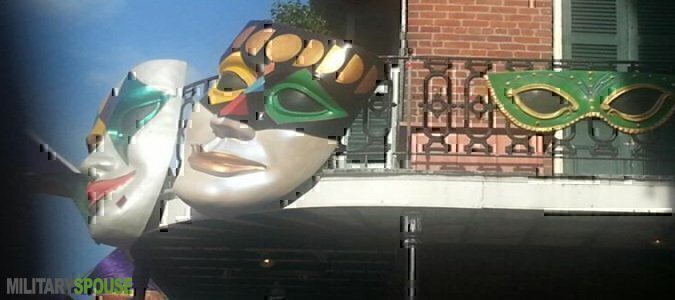Masks. Beads. Liquor. Everything in excess. Ah it must be Mardi Gras!
Originally celebrated in France then Rome and Venice, the tradition of Fat Tuesday started as a way to indulge on the last day before the season of Lent started. It was a time for masked parties, excessive food, and a general feeling of debauchery before the Easter season begins. Some of the traditions still carry over into the Mardi Gras and Carnival celebrations we see around the world today, though I’m not sure our ancestors would approve of some of the more outlandish behaviors you see on Bourbon Street.
The masked balls are a tradition of days gone by. In the first celebrations of Mardi Gras, extravagant balls would be held on Fat Tuesday and the masks allowed all classes to mingle together without being identified. It was a night that it didn’t matter where you fell in the social structure, you still got to enjoy the festivities. Today, the masks are still worn; in fact they are required on New Orlean’s parade floats!
Speaking of the parade floats, it was the early 1800’s when the parade became part of the Mardi Gras celebrations. Originally the parade wasn’t what you imagine today. It was masked celebrators walking the streets, carriages throwing goods out of their windows, and people on horseback encouraging others to join the fun. It wasn’t until the mid-1800’s that the floats you see now started coming around. George Soulie designed them in France 40 years before they started becoming a local tradition to create.
Of course you can’t talk about the parade without the bead throwing! The traditional throw was introduced in 1872 with green, yellow, and purple glass beads being tossed to those watching the Mardi Gras parades. The colors were picked to represent royalty, green for faith, gold for power, and purple for justice. When it began, there was no flashing required for these strands of beads. That came about in the 1990’s and still isn’t required. But, then when there is an excess of liquor and that party atmosphere going around there is no telling what might happen!
To those familiar with the holiday, you know it wouldn’t be complete without a King Cake. The green, yellow and purple decorated sweets are baked to honor the Three Kings of Biblical times. Inside is hidden a small, plastic baby to represent Jesus. It’s said that the person who discovers the baby in their slice of cake will have good luck for the year to come. They are also supposed to supply the King Cake to the celebration the following year.
These cakes are traditionally made of twisted or braided cinnamon dough, resembling a mix between a coffee cake and a traditional French pastry. They are covered with a sugar glaze and sprinkled with colored sugar. While there are endless recipes to be found for making your own King Cake, most people will take the easier way out and order theirs. While it’s a bit late for this year, here are a few places to look at ordering from next Mardi Gras season…
In Hampton Roads, VA Twisted Sister Cupcakes have taken on creating these 10’ cakes with a cream cheese filling. Plastic baby included, of course!
If you find yourself near Lafayette, LA you need to go to Meches Donuts. My Louisiana family told me they have the best King Cake around. Lucky for those of us not in the Lafayette area, they deliver!
Of course I have a soft spot for Randazzo’s Camellia City Bakery King Cakes in New Orleans. Not only will they ship your sweets to you, they also make special red, white, and blue King Cakes for our troops that can’t make it back to the states to celebrate Mardi Gras with their families.
Read Next: Fall In Love All Over Again



